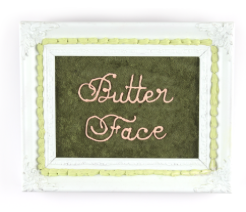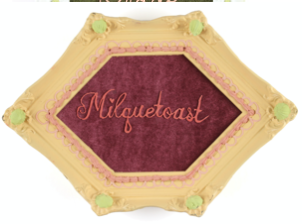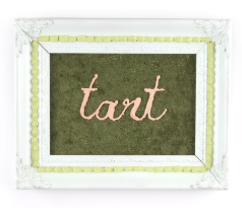The Sweet Series: A Feminist Criticism
- Lauren V. Esparza

- Jul 10, 2020
- 8 min read
INTRODUCTION
Hegemonies are ever-present in our history and modern culture. Defined by Sonja K. Foss, in her book Rhetorical Criticism, "hegemonic ideologies represent experience in ways that support the interests of those with more power." For this state of dominance to be maintained, it is reinforced and "continually defined through the use of rhetorical strategies and practices. A feminist ideology seeks to confront these messages by generating alternative approaches. For clarification, Feminism is "the theoretical study of women's oppression and the strategic and political ways that all of us, building on that theoretical and historical knowledge, can work to end that oppression." Formulating feminist criticisms contribute by analyzing artifacts and identifying how they may challenge hegemonies and structures of inequality. This leads to the redefining of these structures by offering alternative perspectives.
Artifacts can range from literary and rhetorical means to more visual elements such as films, advertisements, and art. Feminist artistic expression is especially important to the story of redefining hegemonic roles. It seeks to define the feminist elements within an artistic piece and how they cohesively function to redefine and adust a perspective on hegonomic cultures. According to Suzanne Lacy, the goal of Feminist art was to "influence cultural attitudes and transform stereotypes." It creates opportunities for an artists' self-expression and self-interpretation from the audience. One such challenger of historic and modern hegemonies is Laura Shull, as she paints the Sweet Series, an art collection that portrays women of high society partaking in actions that are not traditionally considered proper female etiquette. This collection seeks to disrupt hegemonies by employing feminist methods to deconstruct societal presumptions of traditional feminine virtues. I chose this artifact because Shull employs a historical approach to beacon attention toward current hegemonic issues. Additionally, she challenges her audience to compare historical female practices with modern female social regulators. This is achieved by contrasting traditional French Rococo art with the accompaniment of contemporary elements such as technology.
This is further introduced as she alludes to the modern interpretation of the "Let Them Eat Cake Movement." Historically, this became significant after Marie Anttonettt, coined this phrase when she was asked to comment on the famine in 1788, leading up to the French revolution. This context ironically contrasts the modern interpretation of this movement, as it serves to advocate positive female body image by encouraging women to feel comfortable indulging in fattening foods such as cake. This uncharacterized unparalleled to the French revolution is essential to realize because this was an area marked by improper distribution of power, where 96% of governing authority lay within the hands of a few powerful aristocrats. This unequal dominant power distribution draws similar attention to the foundation of hegemonic relationships. Furthermore, the French Revolution sparked a feminist movement that led to increased female participation in political activities as they fought for more rights. This ultimately led to a change in feminine gender roles and expectations that would make headway to modern interpretations. These elements serve to reinforce the importance of this artifact and how it employs feminist tactics to confront and dismantle contemporary hegemonies that protrude in society.

DESCRIPTION
The artifact is a collection of paintings that portray (a) women of high social class partaking improper activities, and (b) framed words that imply double meanings. Together they construct a message of Feminism that works cohesively with the Let Them Eat Cake social movement and feminist methods of hegemonic deconstruction. The painting titled Cake portrays a young woman in elegant Pre-French revolution fashion eating pieces of cake by the handful. Three cherubs play in her hair as she seems to enjoy the cake, her eyes closed and face tilted up. The second piece, called The Party, presents a young woman dressed in a similar fashion period. She seems to be attending a luxurious party with many flowers and pastries present. Despite the elegant affair, she occupies herself in the corner, smoking a cigarette and using a smartphone to pass the time. There are three paintings that each present a word: "Butterface, Milquetoast, and Tart." These words are set on velvet background and are both written and framed using sugar bases, such as cake icing. All three words use a cursive font and are in pinks and reds. These artifacts will now be analyzes using Foss's methods of constructing feminist criticisms.
METHOD
Feminist criticisms serve to identify hegemonies present in society by analyzing an artifact to identify elements of dominance and then disrupt and challenge their power. Foss draws a 6 step procedure that details how to undergo this rhetorical process. Step one involves choosing an artifact with a hegemonic embodiment. I have decided to analyze the Sweet Series paintings because they provide great potential for discussion on the disruption of hegemonic values within feminine expectations. Step two requires the action of analyzing the artifact and identifying strategies of disruption towards hegemonies. These methods include (a)generating multiple perspectives, (b) cultivating ambiguity, (c) reframing, (d) enacting, and (e) juxtaposing incongruencies. Once this analysis section is complete, the third step requires formulating a research question around how the chosen artifact disrupts hegemonies with the methods mentioned. The last step calls for writing the essay, which will include the analysis, methods approach, and implications found.
My method will begin by analyzing my artifacts collectively and then individually. This process ensures the identification of feminism methods and how they are used holistically and separately within the object. These artifacts allocate for several feminist strategies methods include including generating multiple perspectives, reframing, and enacting. In addition to Foss's practices, I will be analyzing the ironic tone these paints use to challenge modern hegemonies.
Firstly, generating multiple perspectives allows an artist to create an artifact that challenges the one "normative" view dictated by hegemonies. This method provides numerous perspectives on a subject to falsify the idea that there is only a single method of approach. The artifact Cake challenges the hegemonic standards of feminine beauty, delicacy, and etiquette by generating a new perspective of an attractive young lady eating cake by the fist-full.
Secondly, reframing is employed through the entire series as it shifts perspectives to view a situation from a different vantage point, resulting in the creation of a new path of thinking. This strategy often takes a word from its original normative idea and resources the meaning, attaching a different sense of the term by altering its spelling or visual element. Shull accomplishes this by reframing words to attach multiple meanings of the phrase Butterface, Tart, and Milquetoast.
Thirdly she uses an enactive approach to embody a new reality for female roles in society. This is evident as she paints this new reality in Cake of a woman indulging in pastry. This new reality seems to imply that women have the opportunity to unapologetically enjoy food without the fear of society opposing labels on their physique.
ANALYSIS
These individual art pieces work cohesively to paint a picture of several feminist values. They are decorated in a traditional Rococo style, that is characterized as ornamental and theatrical, using white and pastel colors, asymmetry, and curves. There is implied irony as these pieces are painted in this traditional style, yet introduce modern ideas through the actions of the female subjects. This artifact generates multiple perspectives by allowing the audience to compare the conventional elements of historical hegemonies with a highlight on modern female desired behaviors. Similarly, these artifacts enact this new reality by spotlighting the desired new fact. These women unapologetically embody the life they wish to live in a modern interpretation of female behaviors and elegance. The individual pieces of this artifact work together to reframe the expectations of female hegemonies on beauty, style, and gracefulness. This is evident because historically, these paintings were produced by men. Dimensions of female hegemonic standards were viewed through their lense. This artifact is reframed to showcase the perspective of feminine beauty through the lens of a female artist. For further iteration, this reframing challenges hegemonies by portraying feminine beauty through the perspective of a female rather than a male. This action allows for a more honest and well-informed opinion on the direction female standards wich to move.
Another tone of irony this artifact as a whole utilizes is the implementation of sugar within each piece. Sugar suggests a "sweetness" in the tone or action of these paints. On the contrary, the activities of these women could be considered different than the traditional hegemonies of female kindness that dictate society. These women seem to be opposing these implications by engaging in activities not traditionally regarded as sweet, or soft and kind. This is evident in how the women in The Party pay little attention to others and instead focuses on her phone. She seems to be ignoring party guests, an act that would not be compared with a sweet young lady.
CAKE
The artifact Cake captures young women indulging in sweets by the handful. Her dress is a light shade of blue, which often symbolizes confidence, intelligence, and youth. This paints a description of her personality and the message the author is attempting to portray. She confidently indulges, head held high, in these sweets, and highlights the truth of the human desire to satisfy. There are three cherubs that play in their hair. Two of which are blue, possibly symbolizing males. They seem to be pulling at her hair as they sit atop her head.
On the contrary, the pink cherub supports its weight and attempts to put a lock of hair into place. This can symbolize how male scrutiny and hegemonies are present within society and how they strive to impact women negatively. However, the woman eating cake is not bothered by this negative attention. She continues to enjoy the cake. The presence of the pink cherub and how it portrays itself as a helpful entity can allude to the idea of women attempting to aid each other despite negative hegemonic implications. Furthermore, it is essential to note that the pink cherub does not try to dismantle the blue cherubs. It instead takes a peaceful approach to the situation by helping women. Shull utilizes a strategy of enactment to embody a new reality for female body image. There is alluding to the modern Let Them Eat Cake movement, which is characterized by encouraging females to indulge in foods, despite hegemonies about the ideal feminine body image.

THE PARTY
In this piece, Shull generates a new perspective by showcasing a young female disengaging from a party as she smokes a cigarette and uses her phone. This generation of her view on the party alludes to disinterest and a desire to be somewhere else. She is not portrayed as masculine. Similarly, her actions do not allude to traditional feminine roles. Indicated by the painting, this the new reality females live within. By producing this artifact, the current economies on the expectations of women at social events are disrupted. The new reality indicates that women do not need to fulfill the role of acting interested and ladylike for show. Instead, these women allude to a different fact that is making way for the new truth they desire.
THE WORDS
"Butterface, tart and Milquetoast" are written in a cursive font with frosting. Each of these words is attached to a double meaning that is used to degrade females. For instance, "butterface" is a common phrase to describe a female with an attractive body but an unattractive face; hence, "everything but the face." Tart refers to both a type of pastry and a slang term that is used to describe a promiscuous girl or a tease. Milquetoast relates to someone that is quickly taken advantage of, weak, and spineless. The use of these words in a negative context contributes to hegemonic ideals. Shull reframes these words and their associated meaning, into exquisite art pieces. Her method of using frosting and a cursive font to showcase these words indicate her intent to bring to light the negativity and replace it with positive meanings.
IMPLICATIONS
Methods of generating new perspectives, reframing, and enacting are used to deconstruct hegemonies of female body image and behaviors by providing alternative realities. Shull brings to light the associates these hegemonies produce and then challenges them by crafting new messages. One such method is that women should indulge in food rather than worry about counting every calorie for fear of what hegemonies will comment on her figure. Another overarching message is the encouragement of females to behave how they see fit, without worrying about what their male counterparts will view as unladylike. Because both of the women in the artifacts are young, it can be implied that Shull wishes to attract this audience. This is an essential message in a world where eating disorders are becoming increasingly common. This artifact should encourage young women to live out their desired reality, whatever it may be.
CITATIONS
“Feminist Art Movement Overview.” The Art Story, www.theartstory.org/movement/feminist-art/.
Foss, Sonja K. Rhetorical Criticism: Exploration and Practice. Waveland Press, Inc., 2018.
Trapasso, Erica. “A Brief History of Rococo Art.” Artnet News, Artnet News, 10 Mar. 2015, news.artnet.com/market/a-brief-history-of-rococo-art-32790.






Comments